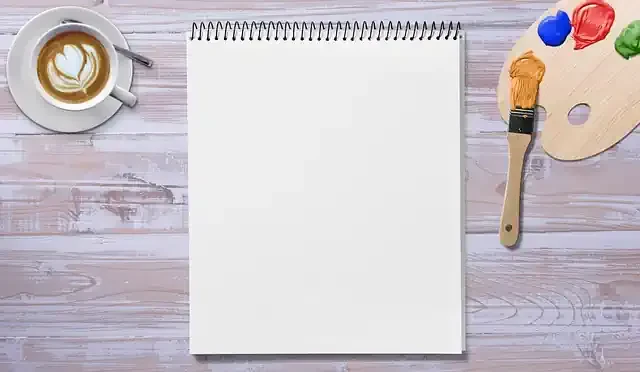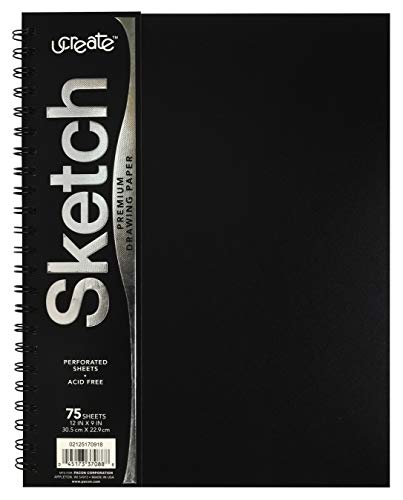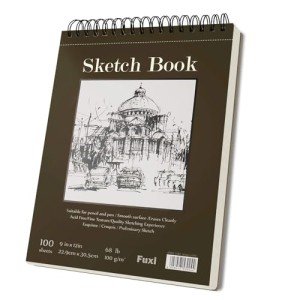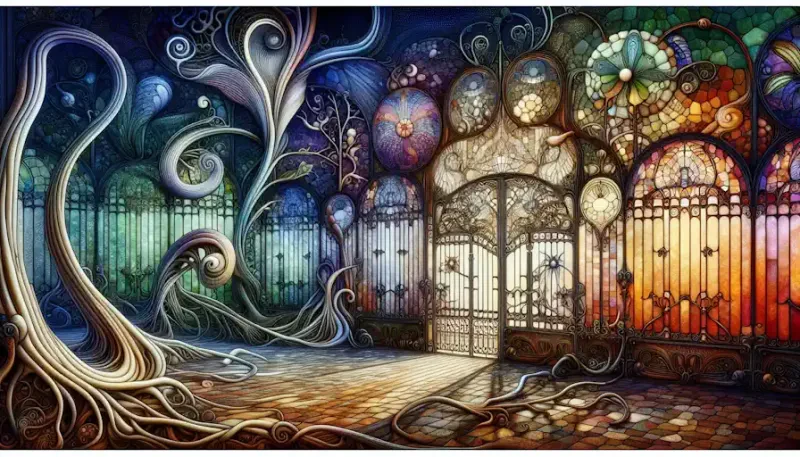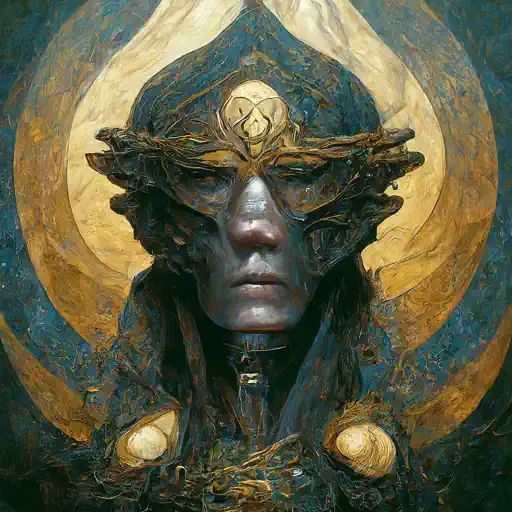Unveiling the Artist Sketchbook: A Treasure Trove of Creativity
The artist's sketchbook is a captivating realm, often shrouded in mystery yet brimming with untold stories and artistic visions. It's more than just a collection of drawings; it's a window into the creative mind, a personal diary of inspiration, and a testament to the artistic process.
Peeking Into the Private World of Artists
Sketchbooks offer an intimate glimpse into the private world of artists. They reveal their thoughts, experiments, and the raw emotions that fuel their work. Through sketches, doodles, and notes, we gain access to the artist's inner sanctum, a space where creativity takes flight unfiltered and unburdened.
Sketchbooks As A Sanctuary For Ideas
For artists, sketchbooks serve as a sanctuary for ideas, a safe haven where they can freely explore and nurture their creative impulses. These books become a repository for fleeting thoughts, observations, and inspirations, capturing the essence of a moment before it fades away.
The Evolution of Sketchbooks Through History
Sketchbooks have a rich and fascinating history, evolving alongside artistic movements and technological advancements. From the rudimentary sketches of cave dwellers to the elaborate illustrated manuscripts of the Renaissance, sketchbooks have always been an integral part of the artistic journey. Today, they continue to adapt and thrive in the digital age, with artists embracing new technologies to create and share their work.
A Glimpse Into The Creative Process
Sketchbooks offer a unique window into the creative process, revealing the steps an artist takes from initial concept to finished artwork. We witness the evolution of ideas, the trial and error, and the moments of brilliance that lead to the creation of a masterpiece. By studying sketchbooks, we gain a deeper understanding of the artistic mind and the intricacies of creative expression.
Exploring Different Types of Sketchbooks
Sketchbooks come in a wide array of shapes, sizes, and styles, each catering to different artistic preferences and needs. From pocket-sized notebooks for on-the-go sketching to large, leather-bound volumes for detailed studies, there's a sketchbook for every artist and every occasion. Some artists prefer plain pages for maximum flexibility, while others opt for gridded or dotted paper for precise drawings.
The Role of Sketchbooks In Artistic Development
Sketchbooks play a crucial role in an artist's development, serving as a training ground for honing skills and experimenting with new techniques. They provide a space for artists to practice their craft, learn from their mistakes, and push the boundaries of their creativity. Over time, sketchbooks become a visual record of an artist's growth, documenting their progress and inspiring them to reach new heights.
Inspiration Unleashed: Sketchbooks As A Catalyst For Creativity
Inspiration is the lifeblood of creativity, and sketchbooks are a powerful tool for igniting and nurturing it. They provide a fertile ground for ideas to bloom, a space where artists can capture fleeting moments of inspiration and transform them into tangible expressions.
Sketchbooks As A Source Of Inspiration
Sketchbooks act as a constant source of inspiration, offering a visual playground where artists can explore new concepts, experiment with different techniques, and push the boundaries of their imagination. The act of sketching itself can be an inspiration, helping to spark new ideas and lead to unexpected discoveries.
Capturing Fleeting Moments Of Inspiration
The beauty of sketchbooks lies in their ability to capture fleeting moments of inspiration. A quick sketch, a spontaneous doodle, or a simple observation can be the spark that ignites a creative fire. By keeping a sketchbook readily available, artists can seize these fleeting moments and translate them into lasting expressions.
From Doodles To Masterpieces: The Power Of Sketchbooks
From the initial spark of inspiration to the final masterpiece, sketchbooks play a vital role in the creative process. They serve as a bridge between the initial idea and the finished artwork, allowing artists to refine their concepts, experiment with different approaches, and develop their ideas into full-fledged creations.
Sketchbooks As A Tool For Experimentation
Sketchbooks offer a safe haven for experimentation, a space where artists can explore new techniques, materials, and styles without fear of failure. They provide an opportunity to try out new ideas, make mistakes, and learn from them, ultimately leading to artistic growth and development.
Overcoming Creative Blocks Through Sketching
Creative blocks can be a frustrating obstacle for artists, but sketchbooks can be a powerful tool for overcoming them. By engaging in the act of sketching, artists can break free from mental ruts, stimulate their creativity, and find new ways to approach their work.
The Joy Of Spontaneous Creation
Sketchbooks offer the joy of spontaneous creation, a chance to let go of inhibitions and express oneself freely. Unburdened by expectations or deadlines, artists can experiment with different ideas and techniques, leading to unexpected discoveries and breakthroughs.
Nurturing Creativity Through Regular Sketching
Regular sketching is a cornerstone of artistic development. By making time to sketch regularly, artists can cultivate their creativity, hone their skills, and build a strong foundation for their artistic practice. The more they sketch, the more they develop their visual vocabulary and the more comfortable they become expressing themselves through art.
Ideas Taking Flight: Sketchbooks As A Launchpad For Projects
Sketchbooks are more than just a repository for inspiration; they are a launchpad for projects, a space where ideas take flight and transform into tangible creations. From initial sketches to finished artwork, sketchbooks play a crucial role in the development and execution of artistic projects.
Sketchbooks As A Breeding Ground For Ideas
Sketchbooks serve as a breeding ground for ideas, a fertile soil where concepts can germinate and flourish. Through sketches, doodles, and notes, artists can explore different possibilities, test out various approaches, and gradually refine their ideas into concrete projects.
Developing Concepts Through Visual Exploration
Visual exploration is a key aspect of the creative process, and sketchbooks provide an ideal platform for it. By sketching out their ideas, artists can visualize different scenarios, experiment with various compositions, and develop a clear understanding of their project's potential.
From Sketches To Finished Artwork: A Journey
The journey from initial sketch to finished artwork is a complex and often iterative process. Sketchbooks document this journey, capturing the evolution of ideas, the challenges faced, and the breakthroughs achieved along the way. They serve as a visual roadmap, guiding artists from concept to completion.
Sketchbooks As A Testing Ground For Techniques
Sketchbooks offer a safe space for artists to experiment with new techniques and materials. By testing out different approaches in their sketchbooks, artists can refine their skills, discover new possibilities, and ultimately enhance the quality of their finished artwork.
Collaborating And Sharing Ideas Through Sketchbooks
Sketchbooks can also be a powerful tool for collaboration. By sharing their sketches with others, artists can get feedback, generate new ideas, and build on each other's creativity. Sketchbooks can also be used to document collaborative projects, capturing the collective creative process and ensuring that everyone is on the same page.
Sketchbooks As A Record Of Artistic Growth
Over time, sketchbooks become a valuable record of an artist's growth and development. By looking back at their sketches, artists can track their progress, identify areas for improvement, and gain a deeper understanding of their own creative process. Sketchbooks serve as a testament to their artistic journey, a visual diary of their evolution as an artist.
Beyond the Basics: Unconventional Uses of Artist Sketchbooks
While sketchbooks are primarily associated with drawing and painting, their versatility extends far beyond traditional artistic practices. They can be adapted for a wide range of creative purposes, serving as a versatile tool for self-expression, documentation, and exploration.
Sketchbooks As A Visual Diary
Sketchbooks can be used as a visual diary, capturing everyday moments, thoughts, and emotions through drawings, doodles, and written notes. They provide a safe space for self-reflection and personal expression, allowing artists to process their experiences and document their lives in a unique and creative way.
Travel Sketchbooks: Documenting Adventures
Travel sketchbooks are a popular way for artists to document their adventures, capturing the sights, sounds, and experiences of new places through sketches, paintings, and written reflections. They serve as a visual souvenir of their travels, preserving memories and providing a unique perspective on different cultures and landscapes.
Sketchbooks As A Form of Self-Expression
Sketchbooks offer a powerful platform for self-expression, allowing artists to explore their identity, emotions, and perspectives through art. They can be used to express personal opinions, share stories, and connect with others on a deeper level. Sketchbooks can also be a form of therapy, helping artists to process emotions, cope with stress, and find meaning in their lives.
Sketchbooks In Other Creative Fields
Sketchbooks are not limited to visual artists; they can be used by creatives across various fields. Writers, musicians, designers, and other creative professionals can use sketchbooks to brainstorm ideas, develop concepts, and document their creative processes. Sketchbooks provide a versatile platform for creative expression, regardless of one's chosen medium.
Digital Sketchbooks: The Future Of Artistic Expression
With the rise of digital technology, digital sketchbooks have become increasingly popular. They offer a range of features and benefits, such as unlimited pages, customizable brushes, and easy sharing capabilities. Digital sketchbooks also allow artists to experiment with different mediums and techniques, blurring the lines between traditional and digital art.
Pushing The Boundaries Of Sketchbook Art
Sketchbook art is constantly evolving, with artists pushing the boundaries of what is possible. From mixed media collages to interactive installations, sketchbooks are being used in increasingly innovative and experimental ways. By embracing new technologies and techniques, artists are redefining the concept of sketchbook art and expanding its potential for creative expression.
Mastering the Art of Sketching: Tips and Techniques for Beginners
Embarking on a sketching journey can be both exciting and daunting. For beginners, the blank page of a sketchbook can feel like a vast, uncharted territory. However, with the right tools, techniques, and mindset, anyone can unlock their artistic potential and create captivating sketches.
Essential Tools for Sketching
While a simple pencil and paper are enough to get started, having the right tools can enhance your sketching experience and open up new creative possibilities. Some essential tools for sketching include:
Pencils: A variety of pencils with different lead grades (HB, 2B, 4B, etc.) allows you to create a range of lines and tones.
Erasers: A kneaded eraser is ideal for lifting graphite without damaging the paper, while a vinyl eraser is great for removing stubborn marks.
Sharpener: A good quality sharpener ensures that your pencils are always sharp and ready for use.
Sketchbook: Choose a sketchbook that suits your needs and preferences. Consider the size, paper quality, and binding style.
Optional tools: Other tools you may find useful include pens, charcoal, colored pencils, markers, and blending tools.
Mastering Basic Drawing Techniques
Sketching is a skill that can be developed through practice and experimentation. Start by mastering basic drawing techniques, such as:
Line drawing: Practice drawing different types of lines (straight, curved, thick, thin) to create shapes and forms.
Shading: Learn how to use shading to create depth and dimension in your sketches.
Perspective: Understand the principles of perspective to create realistic representations of three-dimensional objects.
Composition: Learn how to arrange elements within your sketch to create a balanced and visually appealing composition.
Experimenting With Different Mediums
Don't be afraid to experiment with different mediums to find what works best for you. Try sketching with pencils, pens, charcoal, colored pencils, markers, or even watercolors. Each medium offers unique properties and allows you to express your creativity in different ways.
Composition And Perspective In Sketching
Composition and perspective are essential elements of sketching. Composition refers to the arrangement of elements within your sketch, while perspective is the technique used to create the illusion of depth and distance. By mastering these concepts, you can create sketches that are visually engaging and realistic.
Developing Your Own Sketching Style
As you practice and experiment, you will naturally develop your own unique sketching style. Don't be afraid to embrace your individuality and let your personality shine through in your work. Your sketching style is a reflection of your unique perspective and creative vision.
Learning From The Masters: Sketchbook Studies
One of the best ways to improve your sketching skills is to study the work of master artists. Look at their sketchbook studies to see how they approached different subjects, experimented with techniques, and developed their ideas. By learning from the masters, you can gain valuable insights and inspiration for your own artistic journey.
Showcasing Sketchbook Treasures: Sharing Your Artistic Journey
Sketchbooks are not meant to be hidden away; they are meant to be shared. Sharing your sketchbook art is a way to connect with others, inspire fellow artists, and contribute to the vibrant community of sketchbook enthusiasts. There are numerous ways to showcase your sketchbook treasures and share your artistic journey with the world.
Exhibiting Sketchbook Art In Galleries
Many galleries and art spaces are now recognizing the value and appeal of sketchbook art. Consider submitting your sketchbook pages or curated collections to galleries for exhibition. This can be a great way to gain exposure, connect with art enthusiasts, and potentially sell your work.
Publishing Sketchbook Collections
Publishing your sketchbook collections as books or zines is another way to share your work with a wider audience. This allows you to curate your favorite sketches, add commentary or reflections, and create a tangible representation of your artistic journey. Self-publishing platforms and print-on-demand services make it easier than ever to bring your sketchbook art to life.
Sharing Your Sketches Online
The internet offers a vast platform for sharing your sketchbook art. Create a website or blog dedicated to your sketches, post them on social media platforms like Instagram or Pinterest, or join online sketchbook communities and forums. Sharing your work online can help you connect with other artists, receive feedback, and build a following of fans and supporters.
Connecting With Other Sketchbook Enthusiasts
The sketchbook community is a vibrant and supportive network of artists who share a passion for sketching and visual journaling. Attend sketchbook workshops and meetups, join online forums and groups, or participate in sketchbook challenges and prompts. Connecting with other sketchbook enthusiasts can provide valuable insights, inspiration, and encouragement for your artistic journey.
The Power Of Sketchbook Communities
Sketchbook communities play a vital role in fostering creativity and supporting artistic growth. They provide a platform for artists to share their work, exchange ideas, and learn from each other. By participating in sketchbook communities, you can expand your artistic network, gain exposure for your work, and find inspiration from fellow artists.
Sketchbook Inspiration: Iconic Artists And Their Sketchbooks
The sketchbooks of renowned artists throughout history offer a wealth of inspiration and insight into their creative processes. By studying their sketches, we can learn from their techniques, gain a deeper understanding of their artistic vision, and find inspiration for our own creative endeavors.
Leonardo Da Vinci: The Master of Sketchbooks
Leonardo Da Vinci's sketchbooks are a testament to his insatiable curiosity and relentless pursuit of knowledge. His meticulous drawings of anatomy, machines, and natural phenomena reveal his keen observation skills and scientific approach to art. His sketches are not only beautiful works of art in their own right but also invaluable resources for understanding his creative process and the breadth of his intellectual pursuits.
Vincent Van Gogh: Expressive Sketchbook Studies
Vincent Van Gogh's sketchbooks are filled with expressive drawings that capture the essence of his unique artistic style. His sketches are characterized by bold lines, vibrant colors, and a raw emotional intensity. By studying his sketchbooks, we gain insight into his artistic development, his experimentation with different techniques, and the personal struggles that fueled his creative genius.
Pablo Picasso: A Revolutionary Approach To Sketchbooks
Pablo Picasso's sketchbooks reveal his restless experimentation and constant evolution as an artist. His sketches are characterized by a bold, playful style and a willingness to break with traditional conventions. Through his sketchbooks, we witness his exploration of different styles, from Cubism to Surrealism, and his relentless pursuit of new forms of artistic expression.
Frida Kahlo: Intimate And Personal Sketchbooks
Frida Kahlo's sketchbooks offer a glimpse into her personal life and emotional struggles. Her drawings are often intimate and confessional, exploring themes of pain, identity, and self-discovery. Her sketchbooks are a testament to the power of art as a tool for healing and self-expression, and they continue to inspire artists and art lovers around the world.
Contemporary Artists And Their Sketchbook Practices
Contemporary artists continue to embrace the sketchbook as a vital tool for their creative practice. They use sketchbooks to experiment with new ideas, document their lives, and connect with their audience. By following contemporary artists on social media, attending exhibitions of their sketchbook art, or reading interviews about their creative process, we can gain valuable insights into the role of sketchbooks in today's artistic landscape.
Sketchbook Resources: Where To Find Inspiration And Support
Embarking on a sketchbook journey can be a solitary endeavor, but it doesn't have to be. A wealth of resources exists to provide inspiration, guidance, and support for sketchbook enthusiasts of all levels.
Online Sketchbook Communities And Forums
The internet is a treasure trove of online communities and forums dedicated to sketchbooks and the art of sketching. These platforms provide a space for artists to connect, share their work, exchange ideas, and receive feedback. Popular online sketchbook communities include Sketchbook Skool, Urban Sketchers, and Reddit's SketchDaily.
Sketchbook Workshops And Courses
Numerous workshops and courses are available both online and in-person to help you develop your sketching skills and explore different techniques. These workshops often cover topics such as drawing fundamentals, perspective, composition, and different mediums. They can be a great way to learn from experienced artists, connect with fellow sketchers, and gain new insights into your creative practice.
Books And Blogs About Sketchbooks
Many books and blogs offer valuable information and inspiration for sketchbook enthusiasts. These resources cover a wide range of topics, from sketching techniques and materials to the history of sketchbooks and the work of famous sketchbook artists. Some popular books on sketchbooks include "The Sketchbook Handbook" by Cathy Johnson, "The Creative License" by Danny Gregory, and "Sketchbook Confidential" by Pamela Johnson.
Sketchbook Challenges And Prompts
Sketchbook challenges and prompts are a fun and engaging way to spark creativity and push your artistic boundaries. These challenges often involve specific themes, subjects, or techniques, and they can be a great way to experiment with new ideas and discover hidden talents. Many online communities and social media groups host regular sketchbook challenges, providing a platform for artists to share their work and connect with others.
The Enduring Legacy of Sketchbooks: A Testament to Human Creativity
Sketchbooks hold a unique place in the annals of human creativity. They are more than mere collections of drawings; they are tangible records of the human imagination, windows into the past, and sources of inspiration for the future.
Sketchbooks As A Reflection Of Our Times
Sketchbooks often reflect the social, cultural, and historical context in which they were created. They capture the zeitgeist of an era, offering glimpses into the lives, thoughts, and concerns of people from different times and places. By studying sketchbooks from various periods, we can gain a deeper understanding of the human experience and the evolution of artistic expression.
The Importance Of Preserving Sketchbook Art
Sketchbook art is a valuable cultural artifact that deserves to be preserved and appreciated. Sketchbooks provide a unique window into the creative process, revealing the artist's thoughts, experiments, and the raw emotions that fuel their work. By preserving sketchbooks, we ensure that future generations can learn from and be inspired by the artistic legacy of the past.
The Timeless Appeal Of Sketchbooks
Sketchbooks have a timeless appeal that transcends cultural boundaries and historical periods. Their raw, unfiltered nature allows us to connect with the artist on a personal level, witnessing their struggles, triumphs, and the evolution of their ideas. Sketchbooks offer a universal language of creativity that speaks to the human spirit, regardless of time or place.
Sketchbooks As A Source Of Inspiration For Future Generations
Sketchbooks are not just relics of the past; they are also a source of inspiration for future generations of artists and creatives. By studying the sketchbooks of their predecessors, aspiring artists can learn valuable lessons about technique, process, and the importance of experimentation. Sketchbooks can spark new ideas, ignite passions, and encourage the next generation to embrace their own creative potential.
The Future Of Sketchbooks In A Digital Age
In the digital age, sketchbooks are evolving to embrace new technologies and platforms. Digital sketchbooks offer a range of features and benefits, such as unlimited pages, customizable brushes, and easy sharing capabilities. However, the essence of sketchbook art remains the same: a personal, unfiltered expression of creativity. Whether analog or digital, sketchbooks will continue to play a vital role in the artistic process, providing a space for exploration, experimentation, and self-discovery.
Summary
This comprehensive article looks into the secret world of artist sketchbooks, exploring their significance as a wellspring of creativity and a launchpad for artistic projects. Sketchbooks offer a unique glimpse into the private world of artists, showcasing their raw ideas, inspirations, and the evolution of their artistic process.
From serving as a sanctuary for fleeting thoughts to acting as a catalyst for experimentation and innovation, sketchbooks play a crucial role in artistic development. They transcend traditional boundaries, serving as visual diaries, travel companions, and tools for self-expression across various creative fields.
Aspiring artists can find valuable guidance through tips on sketching techniques, exploring different mediums, and mastering composition and perspective. Additionally, the article highlights the importance of sharing sketchbook art with the world, whether through exhibitions, publications, or online platforms, emphasizing the power of sketchbook communities in fostering creativity and connection.
Iconic artists like Leonardo Da Vinci, Vincent Van Gogh, Pablo Picasso, and Frida Kahlo serve as inspiration through their unique approaches to sketchbooks. Moreover, the article provides a wealth of resources, including online communities, workshops, books, and challenges, to support sketchbook enthusiasts on their artistic journey.
Ultimately, this article celebrates the enduring legacy of sketchbooks, showcasing their ability to reflect our times, inspire future generations, and capture the timeless essence of human creativity in both analog and digital forms.
